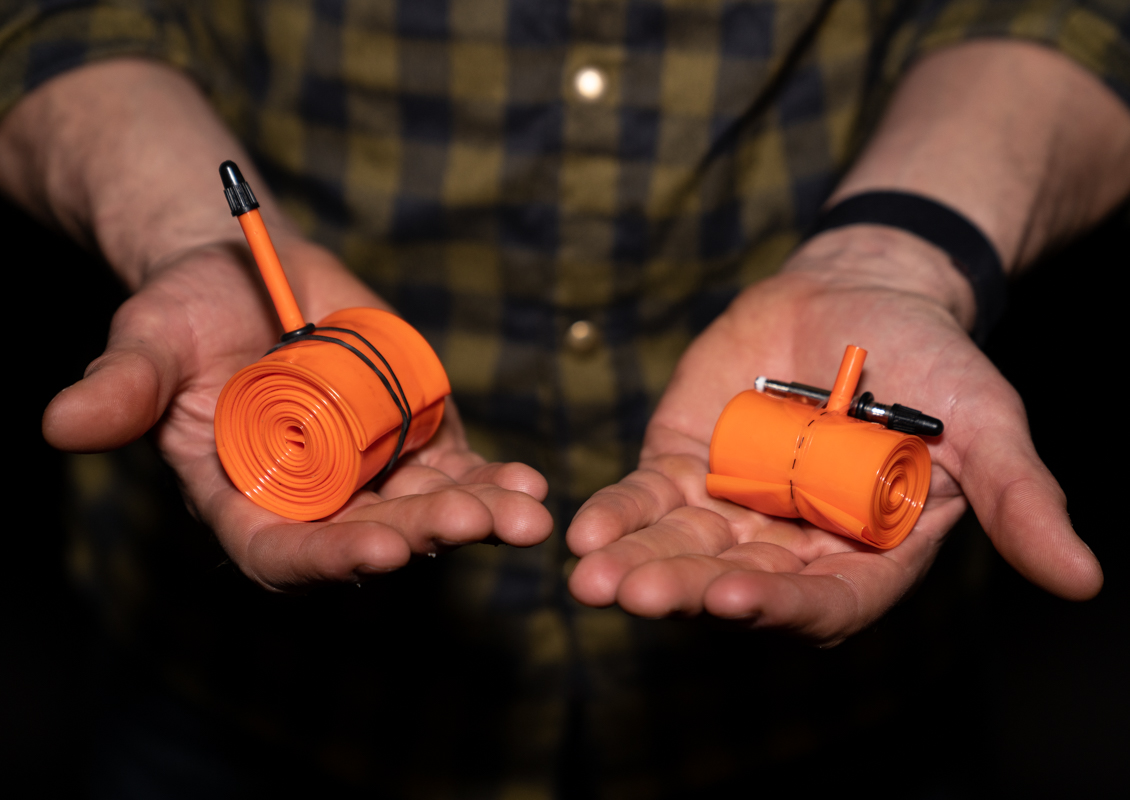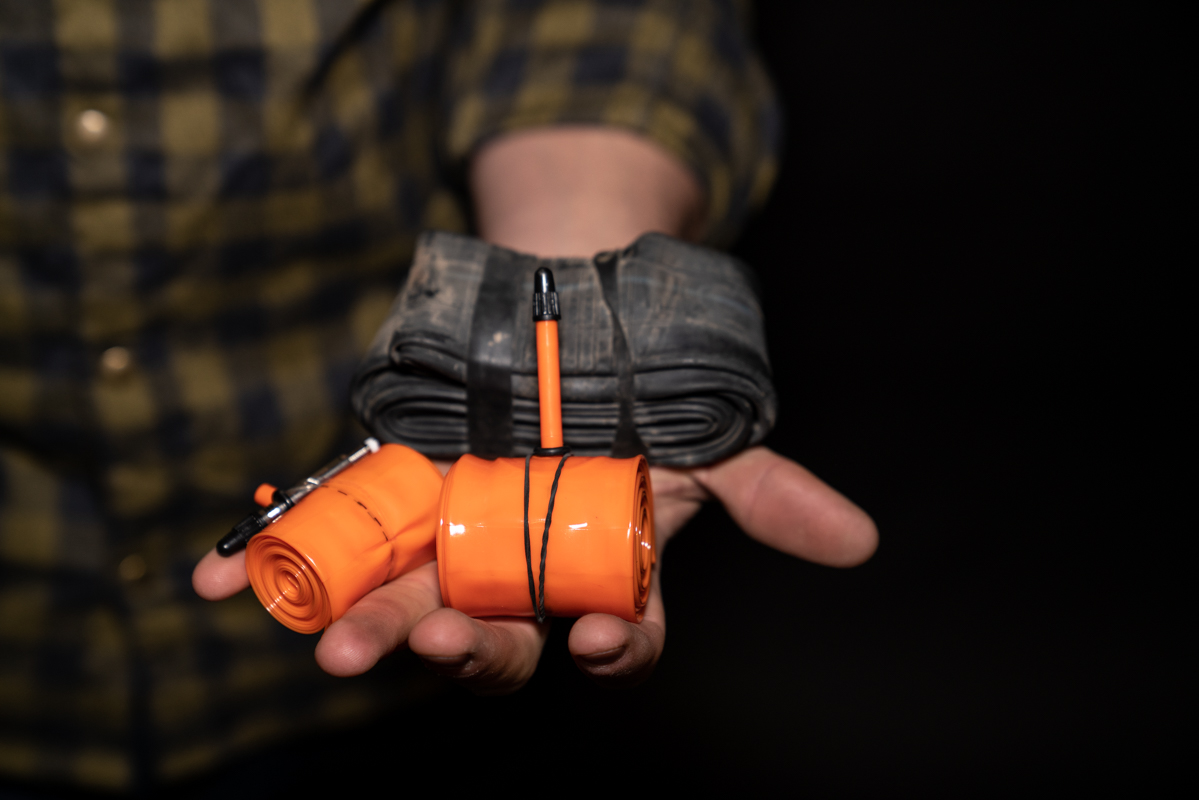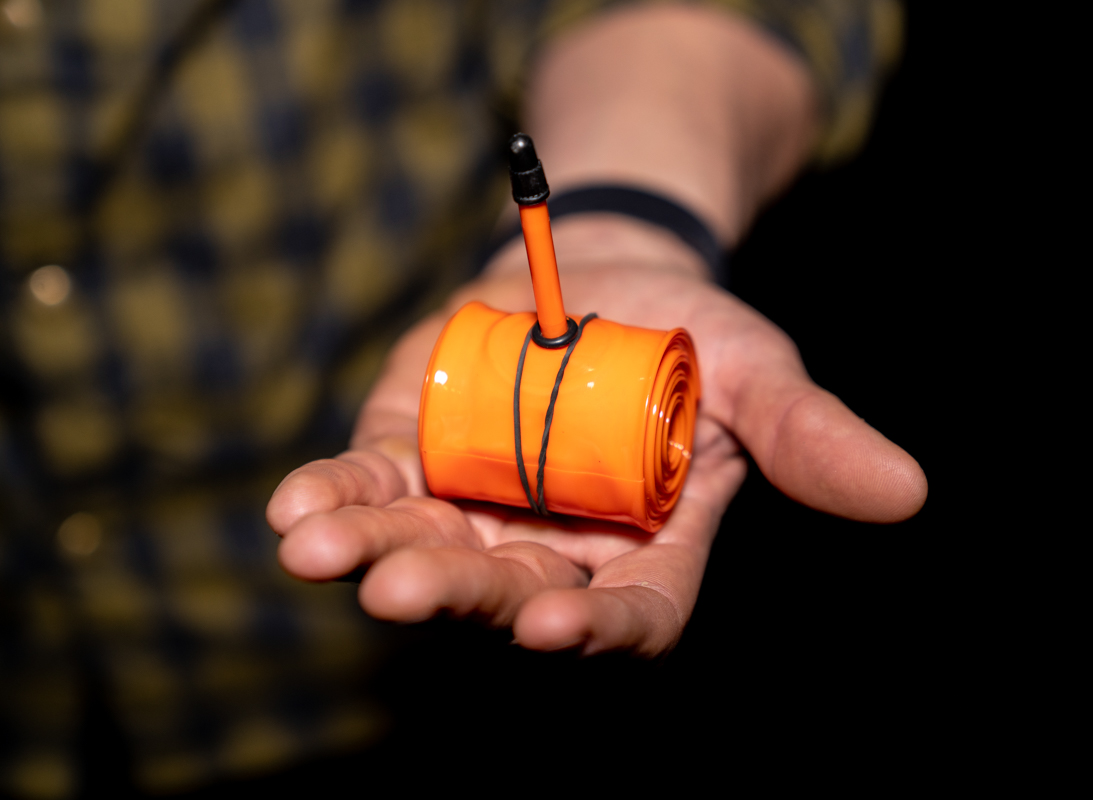Tubolito re-engineered the bicycle tube
Originally posted on March 26, 2019 at 16:20 pm by Scott Williams
Surprisingly, in a recent year-end survey conducted by Dirt Rag, we asked riders if their wheels were set up tubeless, and of the near six-thousand responses, 52% responded no. This was really surprising to me considering how long tubeless technology has been around. However, even if you’re not running tubes in your wheels, you still likely carry one as a backup. What if I were to say you could cut the weight of your tube(s) in half and make them more durable?
Equally bewildered, I sat down with Christain Lembacher and Akos Kertesz, founders of Tubolito, for a little Q&A on how they are looking to re-boot and put their spin on the 100-year old bike tube.
How did you come across this butyl tube alternative material and what exactly is it?
We came across this material in our previous job working on new high tech materials in the loudspeaker industries. The material the tubes are made of is a Thermoplastic Polyurethane Elastomer (TPU). TPU is part of the Thermoplastic Elastomer (TPE) material family. TPE is very interesting, as it combines multiple material features:
• Thermoplastic – rigid and hard, such as a typical plastic bottle
• Elastomer – soft and elastic, such as rubber bands
• TPE combine both of these behaviors
What made you think to apply this material to a bicycle tube?
As passionate mountain bikers, we were used to doing tradeoffs like weight saving versus robustness. The characteristics of this high-tech material were impressive to us. Light and robust — the perfect combination for a bicycle inner tube! The idea of Tubolito was born.

Once you realized the material could work as a butyl alternative, how long did it take for design, construction, and testing of the first working tube?
After coming up with the idea in late 2015, the next steps were to find a supplier for the material and to think of a manufacturing process. Thanks to our industry experience, we were able to manufacture the first prototype in early spring, 2016. We immediately got some very positive feedback and saw demand for a light and robust bicycle inner tube, and kept working to develop our product further.
Were intentions from the start to create a consumer product?
In the beginning, we were driven by the challenge to be able to manufacture a bicycle inner tube out of this high-tech material. As we got some very positive feedback right from the beginning, it was soon clear [that we should] make it a consumer product.
There appear to be only a few U.S. dealers; what has been the response from them thus far?
So far, the feedback we’ve gotten — [including] from U.S. dealers like albes.com or fairwheelbikes.com — is very positive. It’s also very important to us to work very closely with our partners, including dealers and (of course) riders. Every feedback we get is highly appreciated and taken seriously [as we] keep working on our vision: the perfect bicycle inner tube developed for the optimal riding experience.

Other than tubolito.com, are there other online stores which U.S. consumers can purchase the tubes?
In 2019 we will further expand our distribution network, especially we will have strong expansion towards the U.S. so that we will be available in shops in more countries. To see all options of getting a hand on a Tubolito one can check the dealer’s section on our website.
Tubolito tubes are intended as a lightweight, more durable option for riders who run butyl tubes, but I can’t help but wonder if they are equally appealing options for tubeless riders as well. One of the benefits of tubeless is the ability to run lower pressures, are the Tubolito tubes able to do the same?
Regarding tire pressure, our tubes do not have any min/max pressure as such. Within the min/max indications given on the tire, any pressure is fine for Tubolitos. Regarding so-called snake bites, Tubolitos are as strong as standard rubber tubes. We see the advantage that the mounting of Tubolitos is very easy and no sealant is needed. Furthermore, the very small packed size, especially of our S-Tubo products, might be appealing to tubeless riders if they take a spare tube with them.
Check out Tubolito’s Snake Bite Test and Needle Puncture Test videos.
Are you working on any new products?
For a very long time, there were hardly any innovations at the bicycle inner tube. We do see plenty of options for new products, and we see ourselves as tube engineers creating the perfect bicycle inner tube for each use case. As for ambitious road bike riders, low weight and low rolling resistance might be the most important features, the highest possible protection against punctures might be more important to people riding in their daily lives.
To come back to your question: our minds are full of new ideas. Stay tuned.
Impressions
I’ve been running the 29” Tubo MTB (85 grams) tubes front and rear on a few different wheel/tire combo’s with no issues thus far. Our samples each weighed in a svelte 83 grams and can be rolled up to be about the size of a standard shot glass. For comparison sake, a Bontrager 29” tube weighs 201 grams, and a cup of Notubes sealant weighs 45 grams.
Installation of the Tubolito tubes was simple, a bit easier than a standard tube and much easier than dealing with sealant for a tubeless setup. The smooth bright-orange plastic-like material allowed the tube to easily fall into position, unlike a standard butyl tube that often sticks to the tire or twists around itself.
When it comes down to ride feel between traditional tubes and a tubeless setup, the additional weight feels similar to if you went from a sub-800-gram tire to a 900 plus gram tire; it’s without a doubt noticeable due to the extra rotational weight. When switching back and forth between bikes setup tubeless and that with the Tubolito tubes, I admittedly may not have noticed the difference if it weren’t for the blaze orange valve stems.

Combine low rotational weight and solid durability that’s on point or better than a standard tube. My samples have been holding up quite well, and I even have them set at lower pressures similar to what I’d run if they were setup tubeless. I did have one of the S-Tubo MTB tubes fail out of the box. It ended up having an extremely tiny pinhole which after sending the tube back for examination Tubolito mentioned saw this has happened but it was “very, very rare”. I was assured, if this were to happen to a consumer, the company would remedy the situation and they are confident it was a rare anomaly.

Conclusion
Even if you’re not keen on going back to running tubes regularly, the compact size and light weight of a Tubolito Tubo MTB tube make it ideal as a spare. If you want to reduce weight and size even further, Tubolito offers the S-Tubo MTB tube which has a removable valve stem and weighs 45 grams. To make it as light as possible, you lose some durability compared to the Tubo MTB but claims to have the same puncture resistance as a standard butyl rubber tube.